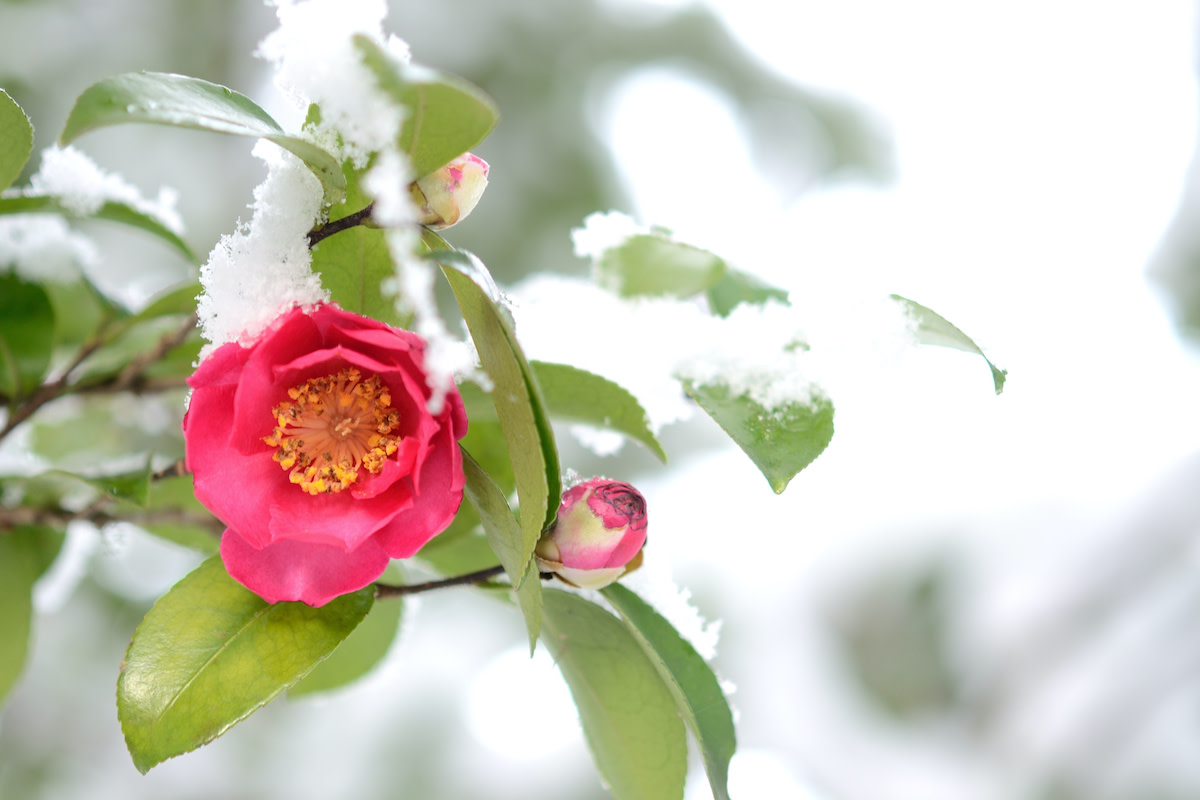12 Flowers That Bloom in Winter: Winter Garden Plants
Written by MasterClass
Last updated: Sep 2, 2021 • 3 min read
There are a wide variety of flowers that bloom in winter. Read on to discover which types of winter blooms you might like to add to your garden.
Learn From the Best
What Are Winter Flowers?
Many flowers die in winter and are reborn in the spring (similar to deciduous trees); however, winter flowers remain viable or even bloom from December through early spring, like evergreen shrubs or trees. Certain kinds of annual flowers and perennial flowers, due to their year-round growth cycle and viability, are likely to be winter flowers.
12 Flowers That Bloom in Winter
There are a lot of options to choose from when it comes to planting a winter garden. Check out these twelve winter-flowering plants:
- 1. Algerian iris (Iris unguicularis): These purple flowers often make their appearance in late fall. While they’re quite hardy, they still need plenty of sun to really flourish.
- 2. Camellia (Camellia japonica): Rose-like flowers, camellias have vibrant green foliage and generally pink or red flowers.
- 3. Christmas rose (Helleborus niger): Sometimes also referred to as a Lenten rose, this is one of many plants commonly called hellebores and is a flared white flower that regularly blooms during the Christmas season.
- 4. Clematis: There are winter-flowering clematis plants within the genus Clematis that bloom in the coldest months of the year. The bold green leaves complement the typically bright white flowers.
- 5. Crocus: Flowers in the genus Crocus are commonly called crocuses and can vary in color. Crocus flowers are capable of withstanding cold temperatures and can be a low-maintenance addition to a winter garden.
- 6. English primrose (Primula vulgaris): Five-petal flowers, English primroses begin to bloom around December. They have a delicate appearance but are also extremely hardy plants.
- 7. Mahonia ‘Winter Sun’: A large evergreen shrub with yellow, fragrant flowers, this plant’s name comes from how well it stands up in the coldest season of the year.
- 8. Pansies: Some pansies are winter-hardy, depending on the USDA Hardiness Zone. Winter pansies are able to survive in the cold—although they do best in climates that are moderately cold—and can bloom as yellow, violet, and pink flowers.
- 9. Snowdrops: Belonging to the Galanthus genus, snowdrops are tubular, white blooms that droop downward. Snowdrops do best in areas with truly cold winters and will struggle in warmer climates.
- 10. Winter aconite (Eranthis hyemalis): These bright yellow flowers look like buttercups and provide some sunny color against a snowy backdrop.
- 11. Winter jasmine (Jasminum nudiflorum): Uniquely suited to weathering cold climates, winter jasmine is less fragrant than more traditional jasmines.
- 12. Witch hazel (Hamamelis virginiana): A shrub with stringy, yellow flowers, witch hazel thrives in wintertime.
4 Steps to Caring for Winter Flowers
Caring for blooming flowers from late winter through early spring can be as low-maintenance and as simple as fostering the growth of flowering shrubs during more conventional time periods. Here are four steps to caring for winter bloomers:
- 1. Check your Hardiness Zone. Consult the USDA Hardiness Zones map to determine whether your plants are hardy enough to survive the coldest temperatures of your region. By consulting this map, you’ll ensure the flowers you choose can thrive in cold weather.
- 2. Consider light needs. Every plant or flower has its own light requirements—and you’ll need to consider the darker winter skies in providing them what they need. Some thrive in full sun, while others need partial shade or ground cover. Since light shade is common throughout the late fall and winter months, choosing flowers that don’t need a lot of sun can be a wise decision.
- 3. Keep watering in mind. Depending on where you live, the winter weather may do a lot for you in terms of watering your plants. While many of the flowers in a winter landscape are also drought-tolerant, many do best in moist soil with a bit of mulch. If you get a lot of rain, make sure there’s a drainage system in your winter landscape to ensure the roots don’t get too waterlogged. If your winters are drier, keep the soil dewy.
- 4. Think about alternatives. If winter flowers are untenable for your landscaping plans—due to climatic conditions or whatever other reason—don’t give up on keeping some winter color around your home. Many winter flowers can also double as houseplants. Even if the flowers you decide on aren’t hardy enough for your area outdoors, they may well thrive in window boxes or as indoor decorations.
Learn More
Grow your own garden with Ron Finley, the self-described "Gangster Gardener." Get the MasterClass Annual Membership and learn how to cultivate fresh herbs and vegetables, keep your house plants alive, and use compost to make your community—and the world—a better place.
